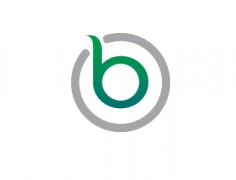What’s scarier — dying of cancer or paying for cancer treatment? It sounds like the punch line to an unfunny joke, but in fact, Americans are divided about half and half when asked to answer that question, according to a recent survey commissioned by the Community Oncology Alliance (COA).
Even if you have what you consider to be good health insurance, the financial burden on cancer patients can be overwhelming, notes Deborah E. Hoffman, MSW, LCSW, associate director of the Shapiro Center for Patients and Families at Dana-Farber Cancer Institute (www.dana-farber.org) in Boston. Most insurance policies have significant limitations, yearly caps and lifetime maximum payouts that can create financial disaster. Even middle-class professionals are not immune from the pressure. In 2007, three out of four Americans who filed for bankruptcy cited medical expenses as a key factor even though most had health insurance and were well-educated, owned homes and held good-paying jobs… and that number has been going up, not down.
However, there is help to be had. An increasing number of medical institutions are realizing that financial help for patients can be nearly as important as medical help. At Dana-Farber, for example, cancer patients are now offered free financial coaching from the Financial Planning Association of Massachusetts (www.fpama.org) to help figure out how to handle medical costs, debt and other issues.
Ask For Help — It’s Available
While not every medical center is equipped to offer full-service counseling such as that offered by the Dana-Farber program, most do have specialists on hand to help you overcome the daunting financial obstacles that accompany cancer – a list of challenges that may include how to cover the cost of required treatment versus available coverage… unexpected out-of-pocket expenses, often including the need to travel some distance for treatment… how to afford complementary and alternative treatments that are often not covered by health insurance… lost income, etc. Though it can be difficult to focus on anything but how to get better, the best strategy is to begin looking at treatment costs as soon as you can after diagnosis — or ask a capable family member or friend to do so. Follow these steps to help stay on top of cancer costs…
- Meet with your hospital’s designated professional (the title may be something like “financial information officer” or “resource specialist”) to discuss your practical concerns. He/she will be familiar with what’s available to help with your financial burden. It’s important to neither overstate nor understate your financial health, as some assistance is based on need.
- Ask your insurer to assign you to a case manager. It’s usually easier to call a particular person with your questions about billing and coverage than to shuttle from one person to another each time you call.
- Learn the details of what your health plan will pay for and what it won’t cover. For example, take note of the amount of your deductible (what you must pay before your coverage kicks in)… the covered length of any hospital stays (some pay for only 30 days, others for more)… annual or lifetime coverage limits (most plans have such limits on what they pay toward treatment for specific health conditions)… co-pays (the cost you are expected to cover at each visit)… and whether or not you are covered by another policy, such as your spouse’s, and if so what are the different percentages each insurer will cover.
- Stay in close touch with your insurer. Even if the firm denies a claim or says it will not cover a particular treatment, keep asking… and ask your doctor to call on your behalf, too. The first answer isn’t always the final answer — for instance, if you’ve been denied coverage for a type of treatment, it may help if you’re able to provide evidence from your physician that it is most effective for your type of cancer.
- Explore supportive programs and possible no-cost services. Depending on your income, you may be eligible for free or low-cost drugs from pharmaceutical companies or treatment from providers. Cancer institutes such as Dana-Farber also have access to donor funds to help strapped patients with hidden cancer costs, such as paying for transportation, gas, parking and meals associated with hospital visits. Also, many private and hospital foundations provide assistance with treatment costs as well. Ask your specialist to outline the possibilities.
- For particular types of cancer, these organizations may provide additional financial support:
The Leukemia & Lymphoma Society
800-955-4572
www.lls.orgThe CancerCare Co-Payment Assistance Foundation
866-552-6729
www.CancerCareCopay.orgThe HealthWell Foundation
800-675-8416
www.healthwellfoundation.org
- Maintain your liquidity. The standard financial advice to pay off credit card balances may not be the right path for those who have cancer. It’s an expensive disease to treat, and during this time, it might make sense to make only minimum payments and keep higher credit lines available to pay bills.
- See a financial professional. A financial planner can assist you with matters like budgeting, debt management, estate planning and insurance. If you have extensive credit card debt, a credit counselor can help you bundle three or four credit card payments into one monthly amount and, depending on your circumstances, negotiate for smaller or suspended payments.
- Get a patient advocate. The nonprofit Patient Advocate Association (www.patientadvocate.org or 800-532-5274) offers free case-management services to help resolve insurance and financial difficulties.
